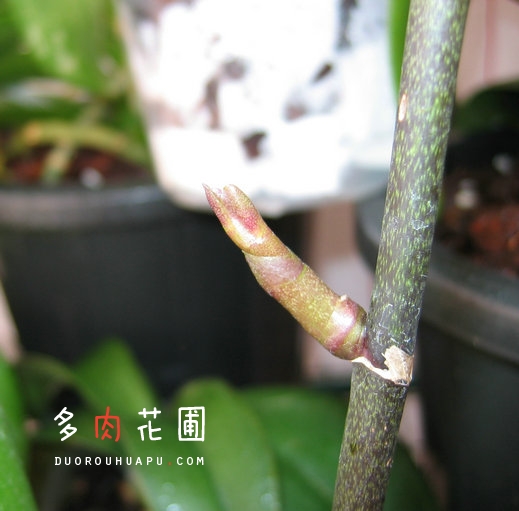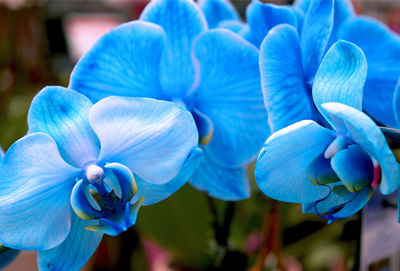How to raise Phalaenopsis after flowering?
How to raise Phalaenopsis after flowering mainly has two aspects,-whether to cut the flower arrow or not, and how to maintain it after flowering. This paper mainly analyzes how to raise Phalaenopsis after flowering.
Do you want to cut flower arrows after Phalaenopsis blooms
After Phalaenopsis blossoms, the flower stem can be cut, but it is best not to cut it all (according to the state of the whole plant, if the roots and leaves are very healthy and strong, it is recommended to keep a few flower stems and send out new flower buds after more than 2 months). Cut from the first flower or the first branch, the remaining flower stalk still has buds, and can be reproduced at a certain time. For Orchidaceae, do not let it bear fruit, because even if it can bear fruit, it is difficult to reproduce with seeds, and the fruiting process consumes nutrients. Whether it can be fertilized or not can be determined by observing the plant growth after flowering.
How to maintain Phalaenopsis after flowering
Phalaenopsis can be slightly slow-release fertilizer after flowering, should be placed in astigmatism, usually dry and then watered, often spray, be careful not to wet the new buds, otherwise it is easy to rot. Put it in a cool, ventilated place in summer, and it's best not to be less than 15 degrees in winter.

Second, how to maintain Phalaenopsis after flowering? butterflies can be given a little slow-release fertilizer after flowering, which should be placed in a place of astigmatism, usually dry and then watered, often sprayed, and be careful not to wet the new buds, otherwise they are easy to rot. Put it in a cool, ventilated place in summer, and it's best not to be less than 15 degrees in winter. How to raise Phalaenopsis after flowering? How to deal with the tube after Phalaenopsis blossoms
How to raise Phalaenopsis after flowering? Phalaenopsis is graceful and graceful, and the flowers in full bloom are as beautiful as butterflies. This is a popular flower in the global flower market. So how to maintain Phalaenopsis after flowering? Let's take a look at the maintenance of butterfly flowering.
How to grow Phalaenopsis after flowering
How to deal with Phalaenopsis after flowering mainly has two aspects, one is not to cut off the flowers and arrows, and the other is how to maintain after flowering.
1. Should Phalaenopsis cut flowers and arrows after flowering
After Phalaenopsis blossoms, the flower stem can be cut, but it is best not to cut it all (according to the state of the whole plant, if the roots and leaves are very healthy and strong, it is recommended to keep a few flower stems, usually more than 2 months later can send out new flower buds). Cut from the first flower or the first branch, the remaining flower stalk still has buds and can be reproduced after a certain period of time. For Orchidaceae, do not let it bear fruit, because even if it can bear fruit, it is difficult to reproduce with seeds, and the fruiting process consumes nutrients. Whether it can be fertilized or not can be determined by observing the plant growth after flowering.
2. How to maintain Phalaenopsis after flowering
Butterflies can be given a little slow-release fertilizer after flowering, should be placed in astigmatism, usually dry and then watered, often spray, be careful not to wet the new buds, otherwise it is easy to rot. Put it in a cool, ventilated place in summer, and it's best not to be less than 15 degrees in winter.
How to grow Phalaenopsis when it blossoms? 1. Strict control of water during flowering
When Phalaenopsis blossoms, the plant is generally dormant or semi-dormant, must not water, must strictly control the water, otherwise the root may rot and shorten the flowering period of Phalaenopsis, the plant can spray a little water when it is especially dry, and the water can not wet the flowers, otherwise it will wither early.
2. Fertilization control
It is best not to apply fertilizer during the flowering of Phalaenopsis.
3. Temperature
The temperature is above 15 degrees, preferably above 18 degrees, can be maintained normally, Phalaenopsis roots do not like stagnant water, like air humidity, and other media dry and then watering, can not be too much, it originally grows on the tree trunk, the root is aerial root, can absorb water and nutrients from the moist air.
4. avoid exposure to the sun
Do not expose to the sun, just in a bright, warm and ventilated room.
5. Pruning
After Phalaenopsis blossoms, pedicels are cut off (some flower friends advocate not cutting pedicels).
- Prev

Summer Management of Phalaenopsis
Phalaenopsis likes to live in a semi-shady environment with high temperature, high humidity and good ventilation. The most suitable growth temperature is 22-28 degrees Celsius. If the temperature is too high or too low, it will adversely affect its growth. In summer, the weather is hot, the air temperature often exceeds 32 degrees Celsius, and the air circulation is not good, and the direct sunlight is strong
- Next

What to do when good luck is rotten? learn to have rotten roots at 5: 00. / water improperly and fertilize too much
As a beautiful and beautiful flower, the first flower is the first choice of many flower friends. However, in the process of breeding, due to improper maintenance, all kinds of problems will arise at the moment of good luck, such as yellowing leaves, rotten roots and so on.
Related
- Fuxing push coffee new agricultural production and marketing class: lack of small-scale processing plants
- Jujube rice field leisure farm deep ploughing Yilan for five years to create a space for organic food and play
- Nongyu Farm-A trial of organic papaya for brave women with advanced technology
- Four points for attention in the prevention and control of diseases and insect pests of edible fungi
- How to add nutrient solution to Edible Fungi
- Is there any good way to control edible fungus mites?
- Open Inoculation Technology of Edible Fungi
- Is there any clever way to use fertilizer for edible fungus in winter?
- What agents are used to kill the pathogens of edible fungi in the mushroom shed?
- Rapid drying of Edible Fungi

